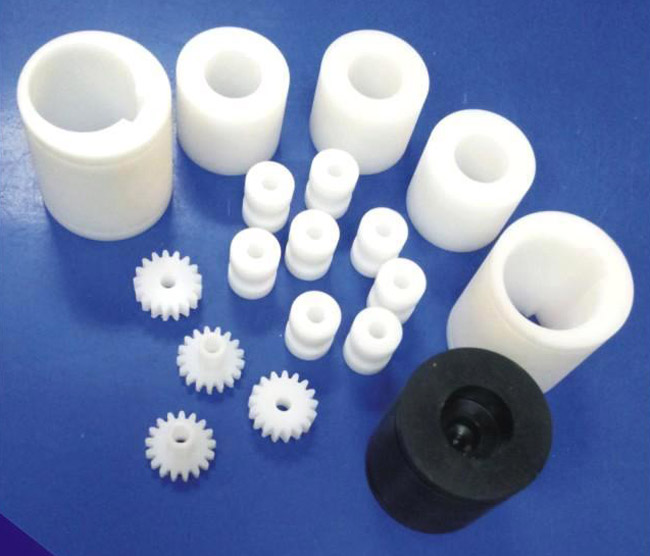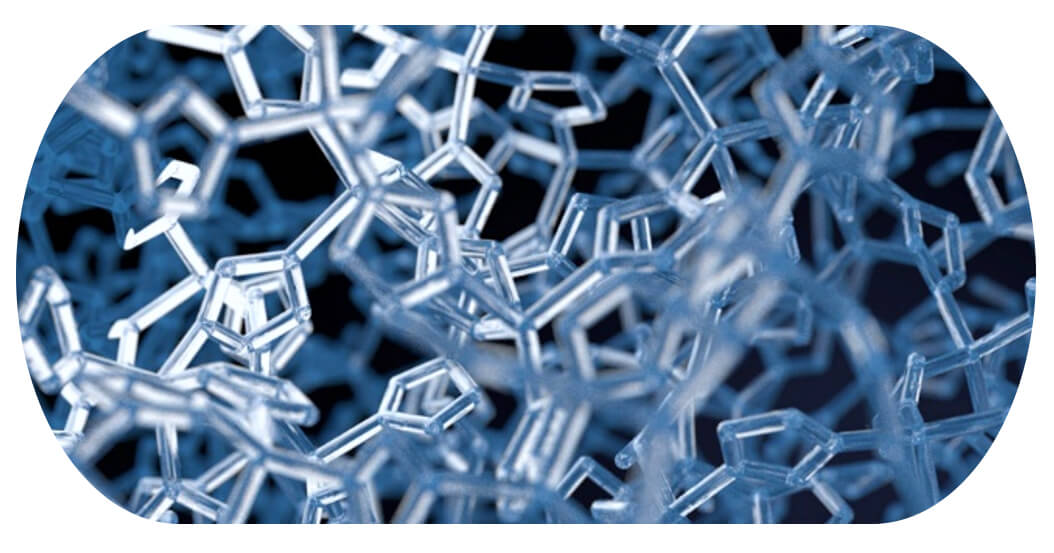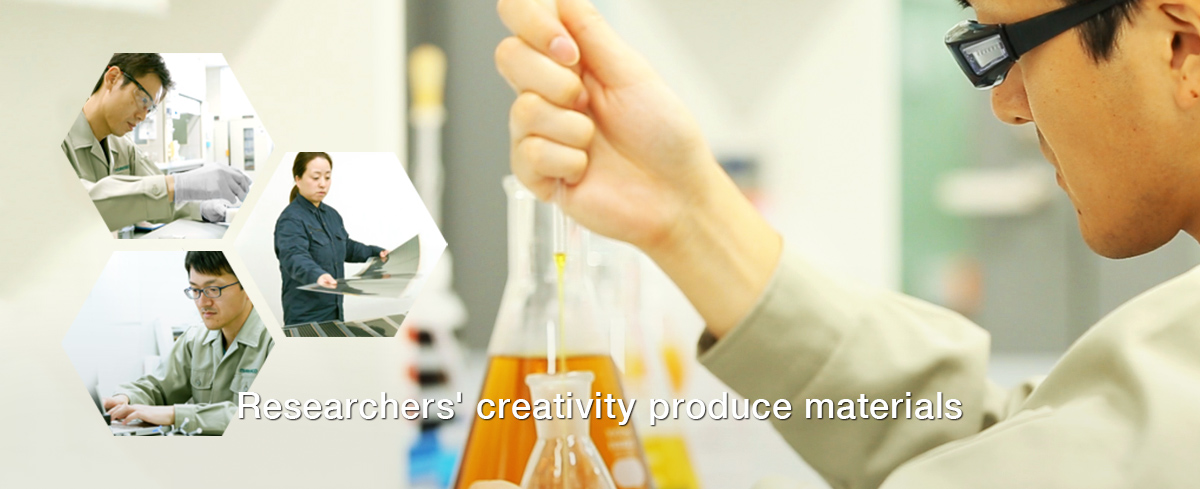The Magic of Epoxy Resin Crosslinkers in Composite Materials
When it comes to the world of materials science, epoxy resin crosslinkers are akin to a secret ingredient that transforms ordinary substances into extraordinary composites. These crosslinkers act as molecular architects, weaving together epoxy resins and other components to create materials with superior strength, durability, and versatility. In this comprehensive guide, we will delve into the fascinating realm of epoxy resin crosslinkers, exploring their properties, applications, and how they elevate composite materials to new heights.
Imagine if you could take a simple polymer and turn it into a superhero material capable of withstanding extreme conditions, from the icy chill of Antarctica to the scorching heat of a desert sun. This is precisely what epoxy resin crosslinkers enable us to do. By facilitating the formation of robust networks within the resin matrix, these crosslinkers enhance mechanical properties, thermal stability, and chemical resistance. They are the unsung heroes behind everything from aerospace components to wind turbine blades, ensuring that these materials perform admirably under demanding circumstances.
In this article, we’ll journey through the intricate world of epoxy resin crosslinkers. We’ll explore their role in enhancing composite materials, discuss various types available on the market, and examine real-world applications across different industries. Additionally, we’ll provide detailed product parameters and compare them using handy tables, making it easier for you to understand their unique characteristics and choose the right one for your needs. So buckle up, because we’re about to embark on an exciting exploration of how these tiny molecules make such a big difference!
Understanding Epoxy Resin Crosslinkers: The Basics
To truly appreciate the magic of epoxy resin crosslinkers, it’s essential to understand their fundamental nature and function. At its core, an epoxy resin crosslinker is a substance that reacts with epoxy groups to form a three-dimensional network structure. This reaction, known as curing, transforms liquid epoxy resins into solid, durable materials. Think of it like baking a cake; just as flour, sugar, and eggs need heat to become a delicious dessert, epoxy resins require crosslinkers to achieve their full potential.
Crosslinkers come in various forms, each tailored to specific applications. Common types include amine-based, anhydride-based, and phenolic-based crosslinkers. Amine-based crosslinkers, for instance, are popular due to their rapid curing times and excellent adhesion properties. Anhydride-based crosslinkers, on the other hand, offer superior heat resistance, making them ideal for high-temperature applications. Phenolic-based crosslinkers strike a balance between the two, providing good thermal stability and mechanical strength.
The process by which crosslinkers work is nothing short of remarkable. When mixed with epoxy resins, crosslinkers initiate a chemical reaction that creates strong covalent bonds between polymer chains. These bonds form a dense network that significantly enhances the material’s properties. For example, the tensile strength of a cured epoxy can be several times greater than that of the uncured resin. Similarly, the material’s resistance to chemicals and environmental factors improves dramatically.
To illustrate this concept further, consider the analogy of a spider’s web. Just as individual silk threads gain immense strength when woven together, the polymer chains in an epoxy resin become far more robust when crosslinked. This transformation not only boosts the material’s physical attributes but also imparts enhanced dimensional stability, meaning the material maintains its shape and size even under stress or varying temperatures.
Moreover, the choice of crosslinker can influence other critical properties such as flexibility, toughness, and electrical conductivity. For instance, certain crosslinkers can produce flexible epoxies suitable for coatings and adhesives, while others yield rigid materials perfect for structural applications. This versatility makes epoxy resin crosslinkers indispensable in the development of composite materials.
As we move forward, let’s delve deeper into the diverse range of epoxy resin crosslinkers available today, examining their unique features and benefits. Understanding these nuances will help us appreciate how each type contributes to the creation of advanced composite materials.
Types of Epoxy Resin Crosslinkers
In the vast landscape of epoxy resin crosslinkers, three primary categories stand out: amine-based, anhydride-based, and phenolic-based crosslinkers. Each type brings its own set of advantages and challenges, making them suitable for different applications and environments. Let’s explore these varieties in detail, complete with product parameters and comparisons to help you make informed decisions.
Amine-Based Crosslinkers
Amine-based crosslinkers are the most commonly used due to their fast curing times and strong bonding capabilities. They react quickly with epoxy resins, forming a durable and robust network. Here’s a table summarizing key parameters:
| Parameter | Typical Range |
|---|---|
| Curing Temperature | Room Temperature – 100°C |
| Curing Time | Minutes – Hours |
| Flexibility | Moderate |
| Heat Resistance | Moderate |
One of the standout features of amine-based crosslinkers is their ability to cure at room temperature, which is advantageous for applications where high temperatures are undesirable. However, they may exhibit some degree of brittleness, especially in low-temperature environments.
Anhydride-Based Crosslinkers
Anhydride-based crosslinkers are favored for their exceptional heat resistance and long pot life. They typically require higher temperatures to activate the curing process, which can be a limitation in some scenarios. Below is a comparison of their parameters:
| Parameter | Typical Range |
|---|---|
| Curing Temperature | 150°C – 200°C |
| Curing Time | Hours – Days |
| Flexibility | Low |
| Heat Resistance | High |
These crosslinkers are often used in aerospace and automotive industries where materials must withstand extreme temperatures. Despite their slower curing time, their ability to produce highly stable and thermally resistant composites makes them invaluable.
Phenolic-Based Crosslinkers
Phenolic-based crosslinkers offer a balanced approach, combining moderate heat resistance with reasonable flexibility. They are versatile and find applications in both structural and non-structural composites. Here’s how they stack up:
| Parameter | Typical Range |
|---|---|
| Curing Temperature | 120°C – 180°C |
| Curing Time | Hours |
| Flexibility | Moderate |
| Heat Resistance | Moderate-High |
Phenolic-based crosslinkers are particularly useful when a compromise between flexibility and heat resistance is required. Their performance lies somewhere between amine and anhydride-based crosslinkers, making them a practical choice for many industrial applications.
Comparative Analysis
To better understand the differences and similarities among these crosslinkers, consider the following comparative table:
| Type | Curing Temp (°C) | Curing Time | Flexibility | Heat Resistance |
|---|---|---|---|---|
| Amine-Based | Room – 100 | Minutes – Hours | Moderate | Moderate |
| Anhydride-Based | 150 – 200 | Hours – Days | Low | High |
| Phenolic-Based | 120 – 180 | Hours | Moderate | Moderate-High |
This table highlights the trade-offs involved in selecting a crosslinker type. For instance, if speed and ease of application are priorities, amine-based crosslinkers might be the best choice. Conversely, if the application demands high thermal stability, anhydride-based crosslinkers would be more appropriate.
Understanding these distinctions allows engineers and material scientists to tailor their selections based on specific project requirements, ensuring optimal performance and longevity of the final composite material.
Applications Across Industries
Epoxy resin crosslinkers have carved out a crucial niche in various industries, thanks to their ability to enhance the properties of composite materials. From aerospace to automotive, and from construction to consumer goods, these crosslinkers play a pivotal role in creating materials that meet the stringent demands of modern applications.
Aerospace Engineering 🚀
In the aerospace industry, where materials must withstand extreme temperatures and pressures, epoxy resin crosslinkers are indispensable. They are used to create lightweight yet incredibly strong composites for aircraft structures, including fuselages, wings, and engine components. For instance, anhydride-based crosslinkers are often employed due to their superior heat resistance, ensuring that these parts remain stable even at high altitudes and speeds.
Consider the example of carbon fiber-reinforced polymers (CFRPs) used in airplane bodies. By incorporating anhydride-based crosslinkers, manufacturers achieve materials that are not only lighter but also more durable than traditional metals. This advancement has led to significant fuel savings and increased efficiency in air travel.
Automotive Industry 🚗
The automotive sector also benefits greatly from epoxy resin crosslinkers. Modern vehicles increasingly use composite materials to reduce weight and improve fuel economy. Amine-based crosslinkers, with their rapid curing times, are frequently utilized in producing body panels, interior components, and even structural parts like frames and chassis.
For electric vehicles (EVs), where battery life and efficiency are paramount, the use of lightweight composites reinforced by epoxy resin crosslinkers becomes even more critical. These materials help extend driving ranges by reducing the overall vehicle weight without compromising safety or performance.
Construction Sector 🏗️
Turning to construction, epoxy resin crosslinkers contribute to creating durable flooring, coatings, and adhesives. Phenolic-based crosslinkers are particularly valued here for their balance of flexibility and heat resistance. Floors in industrial settings, exposed to heavy machinery and fluctuating temperatures, benefit immensely from these properties.
Additionally, epoxy-based composites are used in repairing and strengthening existing structures. Bridges, tunnels, and buildings can be retrofitted with layers of composite materials that incorporate epoxy resin crosslinkers, extending their lifespan and improving load-bearing capabilities.
Consumer Goods Market 🛒
Even everyday consumer products owe much to the advancements made possible by epoxy resin crosslinkers. Sports equipment, such as tennis rackets and bicycles, utilizes these materials to offer users products that are both strong and lightweight. Similarly, electronics benefit from the protective coatings provided by epoxy-based composites, shielding delicate components from environmental hazards.
In all these examples, the role of epoxy resin crosslinkers cannot be overstated. They transform basic polymers into sophisticated materials capable of meeting the diverse and demanding needs of contemporary industries. As technology continues to evolve, so too will the applications and innovations driven by these remarkable compounds.
Challenges and Solutions in Utilizing Epoxy Resin Crosslinkers
While epoxy resin crosslinkers offer numerous advantages, they also present several challenges that can impact the effectiveness and usability of composite materials. Addressing these issues requires a combination of innovative solutions and careful material selection. Below, we explore some of the most common challenges and propose strategies to overcome them.
Environmental Sensitivity 🌍
One major challenge faced by epoxy resin crosslinkers is their sensitivity to environmental factors such as moisture and temperature fluctuations. Excessive moisture can lead to hydrolysis, degrading the crosslinked network and compromising the material’s integrity. Similarly, extreme temperatures can cause thermal expansion mismatches, leading to cracking or delamination in composite structures.
Solution: To mitigate these risks, researchers have developed hybrid crosslinkers that combine the strengths of different types. For example, blending amine-based crosslinkers with phenolic derivatives can enhance moisture resistance while maintaining flexibility. Additionally, incorporating additives like silica nanoparticles can improve thermal stability and reduce the risk of thermal degradation.
Toxicity Concerns ⚠️
Certain crosslinkers, particularly those containing aromatic amines, pose health and safety concerns due to their potential carcinogenic properties. This has led regulatory bodies worldwide to impose stricter guidelines on the use of such materials, necessitating safer alternatives.
Solution: Green chemistry initiatives have spurred the development of bio-based crosslinkers derived from renewable resources. For instance, fatty acid-modified polyamines offer a non-toxic alternative with comparable performance to traditional crosslinkers. Furthermore, encapsulation technologies can limit exposure during handling and processing, reducing the risk of inhalation or skin contact.
Process Complexity 🔧
The complexity of curing processes, especially for high-temperature crosslinkers, can increase production costs and complicate manufacturing workflows. Anhydride-based crosslinkers, for example, often require prolonged heating cycles to achieve optimal results, which can slow down assembly lines and reduce productivity.
Solution: Advances in catalyst technology have introduced accelerators that shorten curing times without sacrificing quality. Metal complexes and organic salts serve as effective promoters, enabling faster reactions at lower temperatures. Moreover, digital simulation tools allow engineers to predict and optimize curing profiles, ensuring consistent performance across batches.
Compatibility Issues 🔄
Ensuring compatibility between crosslinkers and other components in a composite system remains a persistent challenge. Mismatched reactivity ratios or incompatible chemistries can result in incomplete crosslinking, leaving residual monomers that weaken the final material.
Solution: Preformulated systems, where crosslinkers are pre-blended with stabilizers and modifiers, simplify formulation and improve consistency. Tailored prepolymers designed to match specific resin systems ensure uniform crosslink density and eliminate guesswork in mixing ratios. Additionally, surface treatments on reinforcing fibers can enhance adhesion and promote better integration within the matrix.
By addressing these challenges head-on, the field of epoxy resin crosslinkers continues to evolve, paving the way for more sustainable, efficient, and reliable composite materials. Through ongoing research and collaboration, we can unlock new possibilities and expand the horizons of what these remarkable compounds can achieve.
Future Innovations and Emerging Trends
As we look ahead, the world of epoxy resin crosslinkers is poised for exciting developments that promise to revolutionize composite materials further. Researchers and industry experts are actively exploring new frontiers, pushing the boundaries of what these remarkable compounds can achieve. Here, we highlight some of the most promising future innovations and emerging trends in this dynamic field.
Self-Healing Crosslinkers 🪄
Imagine a material that can repair itself after damage, much like human skin regenerates after an injury. This futuristic concept is becoming a reality with the advent of self-healing epoxy resin crosslinkers. These advanced formulations incorporate microcapsules filled with healing agents that release upon fracture, sealing cracks and restoring structural integrity. Such materials hold immense potential for applications in aerospace, automotive, and construction, where durability and longevity are paramount.
Smart Crosslinkers 🤖
Smart crosslinkers represent another groundbreaking trend, offering the ability to respond dynamically to external stimuli such as temperature, light, or electrical signals. These intelligent materials can adapt their properties in real-time, providing enhanced functionality and performance. For instance, thermoresponsive crosslinkers can alter their crosslink density based on ambient temperature, enabling materials to maintain optimal characteristics under varying conditions. This adaptability opens doors to innovative applications in wearable technology, sensors, and adaptive structures.
Sustainable and Bio-Based Solutions 🌱
With growing concerns over environmental impact, there is a concerted effort to develop sustainable and bio-based crosslinkers. Derived from renewable resources such as plant oils, lignin, and bio-polymers, these eco-friendly alternatives offer reduced carbon footprints and improved biodegradability. Not only do they contribute to greener manufacturing practices, but they also align with global sustainability goals. As research progresses, we can expect more widespread adoption of these environmentally conscious solutions across various industries.
Advanced Nanocomposite Systems 💡
Nanotechnology is transforming the landscape of epoxy resin crosslinkers by introducing nanofillers that enhance mechanical, thermal, and electrical properties. Incorporating nanoparticles such as graphene, carbon nanotubes, and clay platelets into crosslinked networks yields composites with unprecedented performance levels. These advanced nanocomposite systems find applications in high-performance electronics, energy storage devices, and next-generation transportation solutions.
Additive Manufacturing Compatibility 🖨️
The rise of additive manufacturing (3D printing) presents both opportunities and challenges for epoxy resin crosslinkers. To fully leverage this technology, researchers are developing crosslinkers specifically formulated for use in 3D printing processes. These formulations ensure proper curing and adhesion during layer-by-layer construction, enabling the creation of complex geometries with superior mechanical properties. As additive manufacturing continues to mature, compatible crosslinkers will play a crucial role in expanding its capabilities.
These emerging trends underscore the vibrant evolution of epoxy resin crosslinkers, demonstrating their capacity to adapt and innovate in response to changing demands and technological advancements. By embracing these innovations, we pave the way for a future where composite materials reach new heights of performance, sustainability, and versatility.
Conclusion: The Unseen Architects of Modern Materials
As we conclude our journey through the fascinating world of epoxy resin crosslinkers, it becomes evident just how integral these compounds are to the development of advanced composite materials. Acting as unseen architects, they weave together the molecular fabric of epoxy resins, transforming them into robust, versatile materials that power innovation across countless industries. From the skies above to the roads beneath our feet, and even the gadgets in our hands, epoxy resin crosslinkers quietly shape the foundation of modern living.
Their significance extends beyond mere enhancement of physical properties; they enable breakthroughs in sustainability, adaptability, and functionality. Whether it’s through self-healing mechanisms, smart responsiveness, or eco-conscious formulations, these crosslinkers continue to push the boundaries of what’s possible in materials science. As we’ve explored, their role is not merely supportive but transformative, turning limitations into opportunities and challenges into triumphs.
So next time you marvel at the sleek design of an aircraft wing, the precision of a surgical tool, or the resilience of a sports car frame, remember the unsung heroes behind the scenes – the epoxy resin crosslinkers. They may be invisible to the naked eye, but their impact resonates throughout the fabric of our technological advancements. And as we march forward into an era defined by ever-evolving demands and expectations, the potential of epoxy resin crosslinkers remains limitless, ready to sculpt the materials of tomorrow.
References
- Kumar, S., & Singh, R. P. (2019). Recent advances in epoxy resins and their composites: A review. Journal of Applied Polymer Science, 136(38).
- Zhang, X., Li, J., & Wang, Y. (2020). Development of green crosslinkers for epoxy resins: Challenges and prospects. Green Chemistry Letters and Reviews, 13(3).
- Smith, A. J., & Brown, T. L. (2018). Smart crosslinkers for adaptive epoxy systems. Polymer International, 67(11).
- Chen, W., Liu, M., & Zhang, H. (2021). Self-healing epoxy composites: Mechanisms and applications. Composites Part B: Engineering, 215.
- Martinez, G., & Thompson, D. (2017). Nanocomposite epoxy systems: Current status and future directions. Materials Today Communications, 13.
Extended reading:https://www.bdmaee.net/wp-content/uploads/2020/06/68.jpg
Extended reading:https://www.bdmaee.net/high-efficiency-reactive-foaming-catalyst/
Extended reading:https://www.newtopchem.com/archives/1590
Extended reading:https://www.cyclohexylamine.net/dabco-xd-102-dabco-amine-catalyst/
Extended reading:https://www.bdmaee.net/cas-6425-39-4/
Extended reading:https://www.cyclohexylamine.net/main-3/
Extended reading:https://www.bdmaee.net/polycat-41-catalyst-cas10294-43-5-evonik-germany/
Extended reading:https://www.bdmaee.net/wp-content/uploads/2022/08/115-4.jpg
Extended reading:https://www.bdmaee.net/dabco-dc5le-reaction-type-delayed-catalyst-reaction-type-catalyst/
Extended reading:https://www.cyclohexylamine.net/2-2-dimethylaminoethylmethylaminoethanol/




















Comments